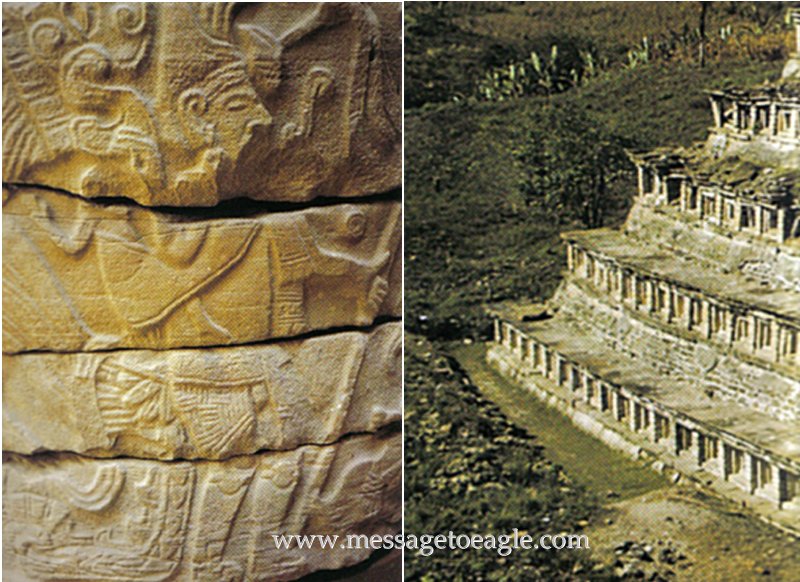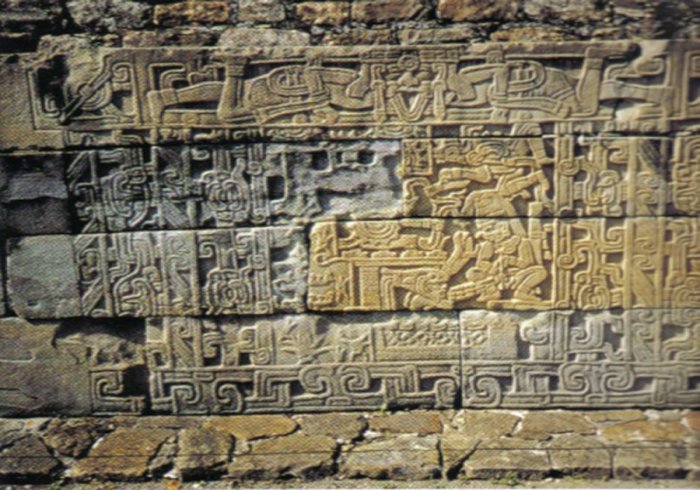MessageToEagle.com – After Teotihuacan Empire eventually went into decline around 600- 700 CE, Pre-Hispanic City of El Tajin became the most important center in north-east Mesoamerica.
Located in the state of Veracruz, among jungle-covered hills in a region occupied by the Totonac Indians, the city flourished from the early 9th to the early 13th century.
El Tajín is considered one of the best preserved ancient sites in southern Mexico.

The name of this ancient city is very interesting. To the locals, the site was known as El Tajín, which was said to mean “of thunder or lightning bolt”. People believed that twelve old thunderstorm deities, known as Tajín, still dwell in the ruins. However, several indigenous maps dated to the Spanish conquest, suggest that the city might have been called ‘Mictlan’ (‘place of the dead’).
On the other hand, according to a surviving Aztec records found in the Codex Mendoza, the Totonac people claimed that El Tajín also means – “place of the invisible beings or spirits”.

El Tajín had only one period of occupation lasting from 800 to 1200 AD and was inhabited by about 15.000 – 20.000 people. After 1200 AD, it was abandoned and partly destroyed, when the region came under the rule of the powerful Aztec empire.
The structures of El Tajin constitute a proof of advanced engineering skills of Mesoamerican builders. Several buildings of the city reveal the astronomical and symbolic significance; they are also richly ornamented with paintings, low reliefs, cornices, fretworks and niches decorated with the spiral motif.
The reliefs and paintings discovered at the site shed light on daily life of these ancient people and their rituals as well.
Mystery Of The Maya Blue Pigment And Its Unusual Chemical Composition
Dzibilchaltún: One Of The Most Ancient Mayan Centers In Northwest Yucatan, Mexico
‘Tonina Chiapas’ Mayan Pyramid In Southern Mexico Is Among The Largest Yet Found
Magnificent Pyramid Of The Magician – The Tallest Structure In Ancient City Of Uxmal
Among the most impressive structures, there is the Pyramid of the Niches, named for the approximately 365 recesses on its four sides and recorded in 1785. The pyramid has its Totonic name ‘El Tajin’ (exactly the same as the city), which means place of “of thunder or lightning bolt” but it even refers to the god of rain.
It took time before the first research works began in El Tajin in 1935. Mexican archaeologist Augustin Garcia Vega was the first to discover that the large city’s Pyramid of the Niches was definitely not the only structure, but there were several other large buildings scattered across the area, such as the palaces of Tajín Chico and the city’s twenty ballcourts, of which the Arroyo Group (the North and South Ballcourts) are the best known.
On their vertical playing surfaces of the ballcourts, there are carved reliefs providing researchers with valuable knowledge about the religious connotations of the sacred game widely practiced by the ancient Maya.
A further exceptional element is the building in the form of a Xicalcoliuhqui motif that appears on temples and other buildings also in archaeological places around Mexico, but it definitely is unique in Mesoamerica.
The Tajín Chico complex is an large acropolis with many palaces and other civil structures but only few temples; it once belonged to the center of El Tajin city. Especially interesting is Building A, which is the most richly decorated of all structures in El Tajin.
Copyright © MessageToEagle.com All rights reserved. This material may not be published, broadcast, rewritten or redistributed in whole or part without the express written permission of MessageToEagle.com
Expand for references





